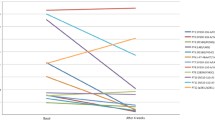Abstract
Low-phenylalanine formula for phenylketonuria (PKU) made from free amino acids as a protein source (AAM formula) has a poor taste and smell. We developed a more palatable formula using low-phenylalanine peptide (LPP) as a protein source. Palatability tests performed by 41 healthy adults confirmed that the palatability of LPP formula was significantly better than that of AAM formula. A group of 48 patients with PKU who had been administered AAM formula since the newborn period were assessed for their preference between the AAM and LPP formulae and their feeding behaviour was compared to that in healthy children. Of patients, 90.9% and 66.6% of healthy infants less than 18 months of age took both formulae without apparent preference, suggesting that sensitivity to taste and smell is more immature in infancy than in later life. Of patients with PKU aged between 18 months and 11 years, 29.1% liked AAM formula rather than the LPP formula, while 66.7% took both formulae without apparent preference. Most healthy children in the same age group who had never previously tasted therapeutic formulae disliked it, although they tended to prefer the LPP formula. Of patients aged between 11 and 17 years, 84.6% preferred the LPP formula while 15.4% preferred the AAM formula. In the controls of this age group, 33% disliked therapeutic formulae, but they tended to prefer the LPP formula.
Conclusion In some young children with phenylketonuria the characteristic taste of amino acid mixture formula encountered in early life is considered to be imprinted and remains as a preference for a long time. Since school children with phenylketonuria usually obtain about 50% of their energy intake from natural food containing small amounts of protein, these patients are considered to have come to have similar preferences as healthy people which result from a waning of the imprinted taste of amino acid mixture formula.
Similar content being viewed by others
Author information
Authors and Affiliations
Additional information
Received: 15 February 2000 / Accepted: 15 May 2000
Rights and permissions
About this article
Cite this article
Owada, M., Aoki, K. & Kitagawa, T. Taste preferences and feeding behaviour in children with phenylketonuria on a semisynthetic diet. Eur J Pediatr 159, 846–850 (2000). https://doi.org/10.1007/PL00008351
Issue Date:
DOI: https://doi.org/10.1007/PL00008351




